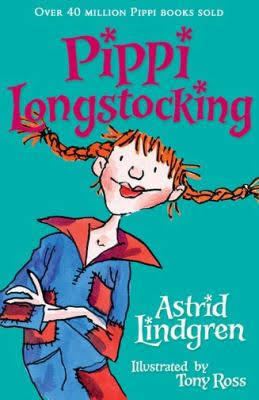8.2 /10 1 Votes8.2
Publication date November 1945 Originally published 26 November 1945 Genre Children's literature | 4.1/5 Goodreads Media type Print Publisher Rabén & Sjögren | |||||||||||||||||||||||||||||||||
 | ||||||||||||||||||||||||||||||||||
Similar | ||||||||||||||||||||||||||||||||||
Pippi Longstocking (Swedish: Pippi Långstrump) is a children's novel by the Swedish writer Astrid Lindgren, published by Rabén & Sjögren with illustrations by Ingrid Vang Nyman in 1945. Translations have been published in more than 40 languages, commonly with new illustrations.
Contents
The first U.S. edition was published late in 1950 by The Viking Press with illustrations by Louis S. Glanzman.
In 2002 the Norwegian Nobel Institute listed the novel as one of the "Top 100 Works of World Literature", based on polling one hundred authors from fifty-four countries.
Origin
Lindgren originally told Pippi stories to her daughter Karin in 1941, when the 7-year-old was home sick with pneumonia. She wrote the first manuscript during her own injury three years later. After it was rejected by Bonniers, Lindgren developed the nonsensical aspects further and submitted the revised version to the 1945 children's book contest sponsored by Rabén & Sjögren, a rather new publisher.
Pippi won the contest that closed August 1, Rabén & Sjögren arranged for illustrations by Ingrid Vang Nyman (her debut in Sweden), and the first edition was published in November.
Plot
The book focuses on the experiences of Pippi Langstrump, a nine-year-old pigtailed redhead whose mother died when she was a baby and her father, a sea captain, has seemingly vanished at sea, so she moves into a big house known as Villa Villekulla, located in a little Swedish village, with her pet monkey Mr. Nilsson, a suitcase filled with pieces of gold, and her unnamed pet horse. Gifted with superhuman strength and countless other eccentricities, Pippi is soon befriended by two local siblings named Annika and Tommy Settergren, who admire her and enjoy her company. Having spent her entire life at sea, Pippi's limited knowledge of common courtesy and average childhood behaviour adds humour to the story when she attempts to enroll at Tommy and Annika's school, attends a circus, and attends a coffee party hosted by Mrs. Settergren.
Series
The first four Pippi books were published in 1945–1948, with an additional series of six books published in 1969–1975. Two final stories were printed in 1979 and 2000.
